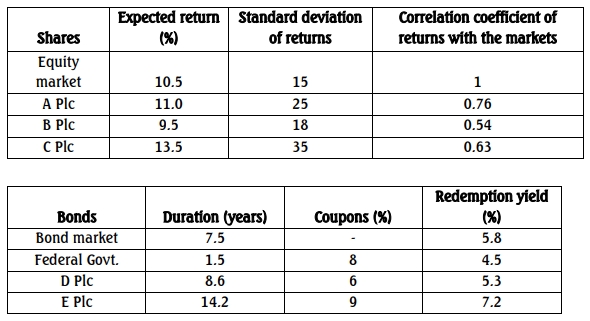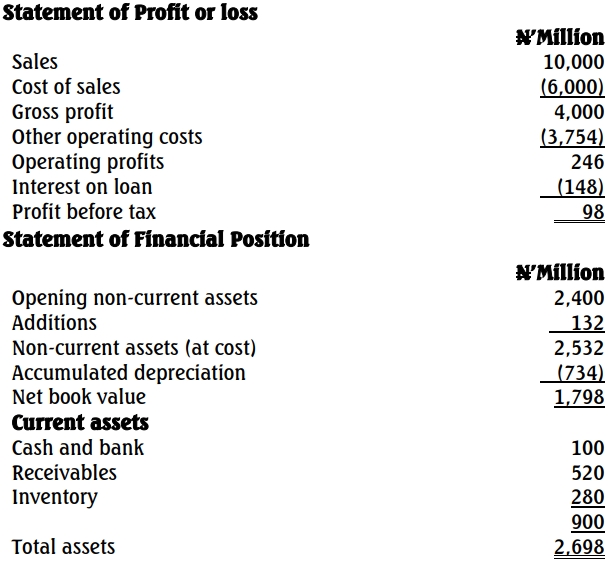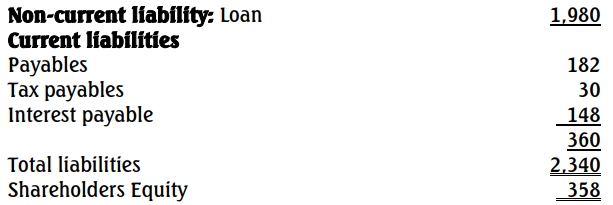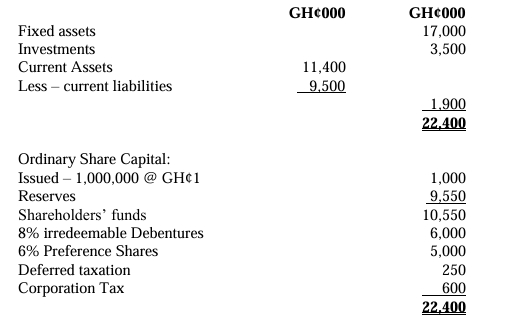You should assume that the current date is 31 December 2019.
You work for Eko Corporate Finance (ECF). One of the clients for whom you are responsible is Gap Plc (GP).
Gap Plc is a listed company and is seeking to raise ₦560 million to invest in new projects during 2020. Currently, Gap Plc is financed by equity. However, at a recent board meeting, the finance director stated that, since other companies in Gap Plc’s industry have average gearing ratios (measured by debt/equity by market value) of 30% (with a maximum of 40%) and an average interest cover of 6 times (with a minimum of 5 times), perhaps the company should access the debt markets. The finance director presented to the board two alternative sources of finance to raise the ₦560 million.
Equity Issue:
The ₦560 million would be raised by a 1 for 2 rights issue, priced at a discount on the current market value of GP’s shares.
Debt Issue:
The ₦560 million would be raised by an issue of 7% coupon bonds, redeemable on 31 December 2029. The yield to maturity (YTM) of the bonds would be equal to the YTM of the bonds of Eko Ventures (EV), another listed company in Gap Plc’s market sector. Eko Ventures has a similar risk profile to Gap Plc and has recently issued its bonds. Eko Ventures’ bonds have a coupon of 7%, will be redeemed in four years at par, and their current market price is ₦110 per ₦100 nominal value.
There were concerns expressed by a number of board members regarding the debt issue since it has been the long-standing policy of the company not to borrow. Their concerns were how Gap Plc’s shareholders and the stock market would react. The company’s cost of capital would increase as a result of the borrowing, leading to a fall in the company’s value.
An extract from Gap Plc’s most recent management accounts is shown below:
| ₦m |
|
| Operating profit |
200 |
| Taxation at 20% |
(40) |
| Profit after tax |
160 |
Additional Information:
- Gap Plc has an equity beta of 1.1
- The risk-free rate is expected to be 3% p.a.
- The market return is expected to be 8% p.a.
- Gap Plc’s current share price is ₦5 per share ex-dividend.
- Gap Plc has 320 million ordinary shares in issue.
Required:
a. Calculate, using the CAPM, Gap Plc’s cost of capital on 31 December 2019. (1 Mark)
b. Assuming a 1 for 2 rights issue is made on 1 January 2020:
i. Calculate the discount the rights issue represents on Gap Plc’s current share price. (1 Mark)
ii. Calculate the theoretical ex-rights price per share. (1 Mark)
iii. Discuss whether the actual share price is likely to be equal to the theoretical ex-rights price. (4 Marks)
c. Alternatively, assuming debt is issued on 1 January 2020:
i. Calculate the issue price and total nominal value of the bonds that will have to be issued to give a YTM equal to that of Eko Ventures’ bonds in the above calculation. (5 Marks)
ii. Discuss the validity of the use of the YTM of Eko Ventures’ bonds in the above calculations. (3 Marks)
d. Outline the advantages and disadvantages of the two alternative sources for raising the ₦560 million, discuss the concerns of the board regarding the bond issue (using the gearing and interest cover information provided by the finance director), and advise Gap Plc’s board on which source of finance should be used. (5 Marks)








